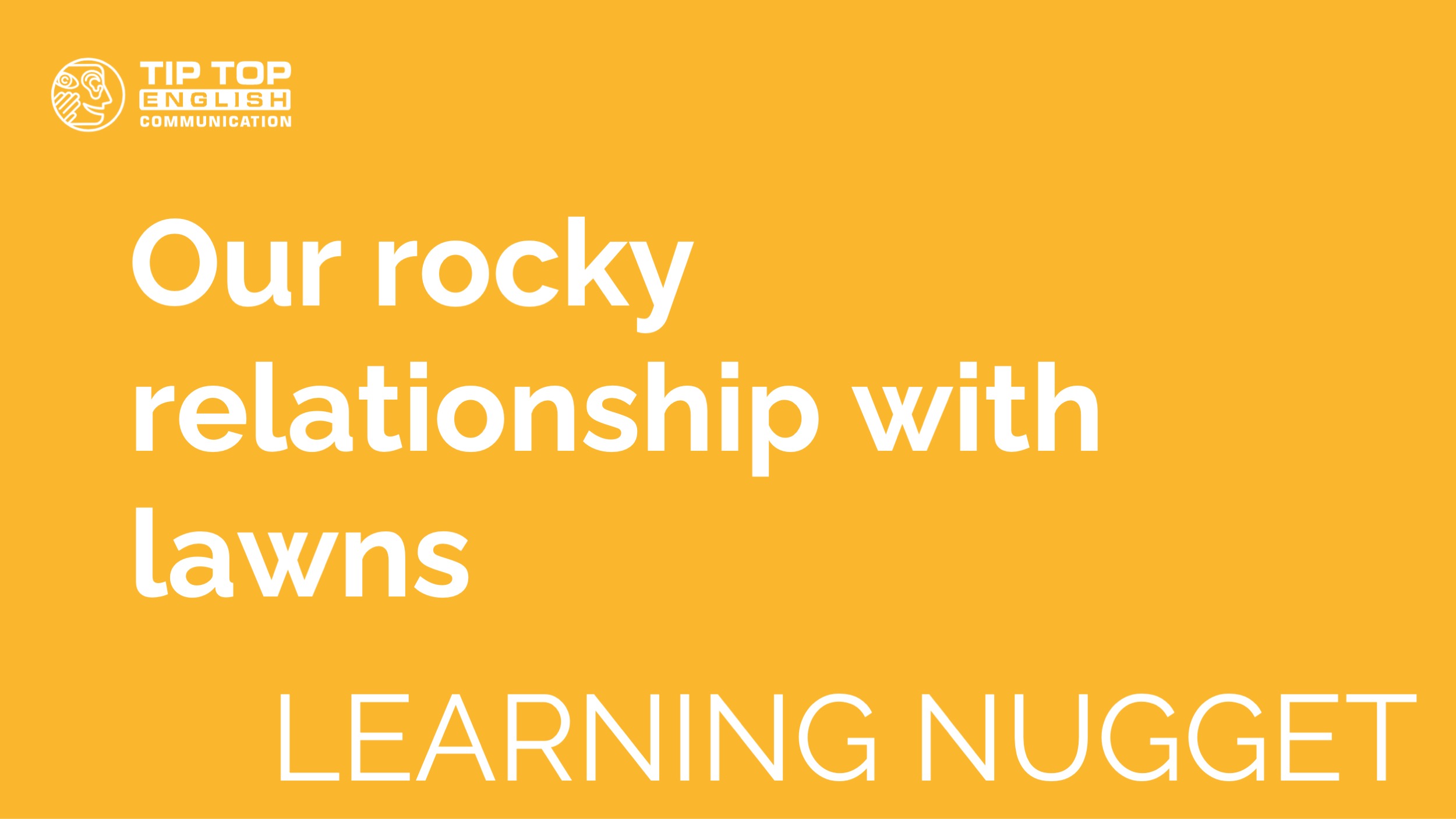Our rocky relationship with lawns
With a wet few weeks at the end of May and a sunny, warm start to June, conditions were just right for almost every green thing to grow like crazy. But, for those who have a yard, it’s likely you paid the most attention to the growth of your grass.
For many decades in the Western world, it’s been almost a given that if you owned a house, you would have a lawn – some patch of land, no matter how big or small, with short, green grass. However, this norm has started to change in recent years.
In this Learning Nugget we take a look at some of the new approachespeople are taking to their yards and the effects of those approaches on the environment. But first let’s dig a little bit into the history of how the idea of having a lawn entered Western society in the first place.
Why are there lawns?
Sometime around the 1600s, wealthy landowners in Europe – especially those in England and France – started creating large areas of grass around their estates. Before modern innovations in lawn care, it took many people a lot of time to cut these areas with scythes and keep them as free as possible of other plants.
If you also consider how grass took up farmable space with something that couldn’t be eaten or sold, it’s pretty easy to see that lawns were status symbols. While most people either couldn’t afford land or had it solely to produce something profitable, a well-kept lawn showed you had no concerns about money.
As more people became comfortably wealthy, lawns steadily grew in popularity. Today they’ve become so normal that it’s strange to see a home without a lawn.
Though now lawns are most often thought of as places for children to play or adults to barbecue, the connection with status is still there. If most Westerners see a yard with high grass, it’s almost an instinct to believe that there’s something wrong with the people who the yard belongs to.
New lawn trends
Relatively recently, people have started questioning the usual idea of a lawn. Those who rarely do anything in their yards that requires grass don’t see the point of maintaining a lawn they never use. Also, many environmentalists say that the amount of water, artificial fertilizer, and pesticides used to maintain the “perfect” lawn create environmental hazards.
So, what alternatives are these people finding, and what are their pros and cons?
One option that’s becoming more and more common in Germany is replacing lawns with rocks or stones. For those concerned about water usage, rocks can definitely reduce that. Also, they can reduce yard work – for a little while, anyway.
Even though there are mats under most rock yards meant to keep any plants from taking root, those mats wear out, and in time there will be either a need to pluck the weeds out or use pesticides to kill them. Additionally, rocks provide very little habitat for insects, notably important pollinators like bees and butterflies that Earth’s ecosystem depends on to survive.
But perhaps the most troubling thing about rock yards for people who don’t think of themselves as environmentalists is that rocks gather heat during the day and release it at night. This means that as summers get generally warmer due to climate change, those who exchange grass for stones will also be dealing with heat longer into summer nights than ever before.
Another possibility those seeking a lawn-free life are attempting is simply letting their yards grow with no or very little mowing or other interference. Again, this can eliminate the need for constant yard work, water, and pesticides. But unlike the stone solution, it is widely considered to be environmentally friendly.
By allowing grass and whatever other plants visiting animals bring into the yard to grow, habitat for a wide variety of insects, birds, and other animals is created. Also, an unmown yard has a greater capacity to turn CO2 into oxygen.
The main downside to the no-mow solution goes back to that instinctually negative response to long lawns mentioned before that is common in the modern-day West. Neighbors and even the law often look down on long, unkept grass. Though it does take more work than just letting grass grow, some avoid this issue by replacing their grass with native plants and wildflowers that are beneficial to the local ecosystem, low-growing, and pleasant to look at.
Getting a grasp on gras
From a luxury of the rich in the 17th century to an environmentalist question mark today, lawns and their place in Western society have evolved greatly over time. That change is still ongoing as people rethink the lawn as it relates to their personal needs and/or the world’s ecosystems.
Hopefully this Learning Nugget has helped you think about lawns in a way you haven’t before, and the next time you’re at a barbecue wondering what to make small talk about, the answer will be right under your feet.
Reminder
And we just want to remind you of our next Day Out on Sunday 14 July from 1:00 – 4:00pm. Last places are available at: dayout@tip-top-english.de
Vocabulary
lawns – Rasen
to grow like crazy – wie verrückt wachsen
yard – Garten, Hof
to pay the most attention – die größte Aufmerksamkeit geben
decades – Jahrzehnte
to be almost a given – wird nahezu vorausgesetzt
some patch of land – kleines Stück Land
approach – Ansatz, Konzept
take to – übernehmen, ergreifen
effect on sth. – Auswirkung auf etw. haben
environment – Umwelt
dig a little bit into – in bisschen tiefer eintauchen in
wealthy – wohlhabend
landowner – Landbesitzer
estate – Anwesen
modern innovations in lawn care – moderne Innovationen der Rasenpflege
scythe – Sense
took up farmable space – einen bebaubaren Platz einnehmen
status symbols – Statussymbole
afford land – Land leisten können
solely – ausschließlich
to have no concerns about – keine Bedenken haben mit…
comfortably wealthy – gut betucht
to grow in popularity – an Popularität gewinnen
Westerners – Westländer
relatively recently – relativ neu
don’t see the point of – etw. nicht einsehen
to maintain – etw. aufrechterhalten, warten, erhalten
environmentalist – Umweltschützer
artificial fertilizer – Kunstdünger
pesticides – Pestizide, Pflanzenschutzmittel
environmental hazards – Umweltbelastungen
pros and cons – Vor- und Nachteile
mats – Matte
taking root – Wurzeln schlagen, sich bewurzeln
pluck the weeds out – Unkraut zupfen
habitat – Lebensraum
notably important pollinators – sehr wichtige Bestäuber
survive – überleben
rocks gather heat – Felsen/Gestein speichern die Hitze
release – freigeben
lawn-free life are attempting – ein rasenfreies Leben wird angestrebt
little mowing – ein bisschen mähen
turn CO2 into oxygen – CO2 in Sauerstoff umwandeln
interference – Eingriff
no-mow solution – die Lösung nicht zu mähen
law – Gesetz
look down – herabblicken, hinuntersehen
unkept grass – ungepflegter Rasen
low-growing – niedrig wachsend
to evolve – entwickeln, entfalten
Excite Your Senses

On our YouTube channel, you can follow along as a native speaker reads this month’s Learning Nugget accompanied by music and pictures.
